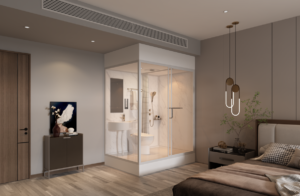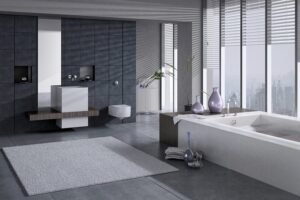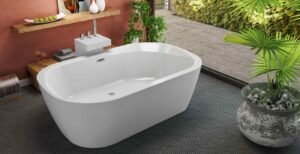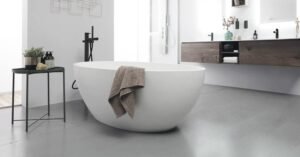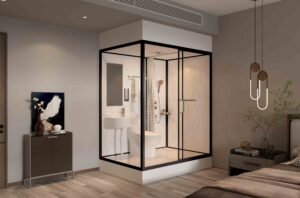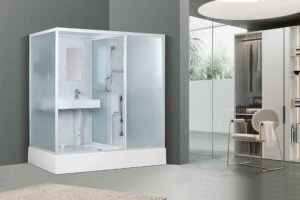Being a homeowner with no knowledge about bathtubs can be a challenge. From walk-in baths to freestanding tubs, the range can be overwhelming! We can begin looking at some of the most common such as the alcove tubs.
Alcove tubs, also called recessed bathtubs, sit between three walls with one long side of the tub closed with an apron. Although modern installations are confined to 2 walls and a glass or window to break away from the traditional narrow style. It is common due to its space-saving quality.
Aside from the quality I have just mentioned, there are more to alcove tubs that make them appealing. The next sections will give you a glimpse of what these are.
Why Is It Called Alcove?
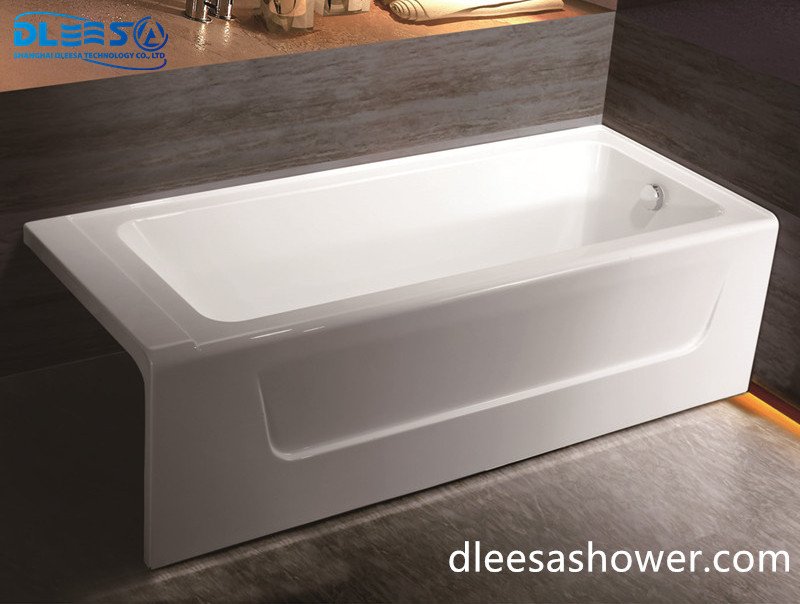
To begin with, what does an alcove mean? It is simply a space or recess in a room with a pushed-back wall not aligned with the other divisions, creating a corner. This space is where a bathtub is placed, with one exposed side.
This side is covered with an apron that supports and gives a clean look to the tub. You can also add wall panels made of tiles or the same material used for the bathtub. If you’re feeling exposed, installing a tinted bathtub door or shower curtain could help.
Also, since alcoves are enclosed by walls, you can take advantage of this and attach showerheads to have a two-in-function and grab bars to assist you in getting in and out of the tub,
While you are at it, a shower niche would also be convenient to keep bathing products within your reach.
Suppose you want to step up your bathing experience. In that case, you can customize or find tubs with jets for hydrotherapy to relax your muscles. Pair this with alcove baths with deeper depth and get an excellent whole-body soak!
You can do many things with the surrounding walls and the alcove tub. If there is an opportunity, you can convert one or two of the walls into a window and get a good view or lighting while taking a bath.
Alcove bathtubs can also vary in material and size. You can choose whatever depending on the size of your nook, budget, and preference. The following aspects can be read in the following sections for your guidance.
What Materials Are Commonly Used for Alcove Tubs?
It is essential to choose the material you will be comfortable with, from bathing and cleaning to maintenance. Your bathtub will be with you for several years, so choosing one that will make you long for baths every day is better.
Fiberglass
Fiberglass is an inexpensive material and probably the cheapest of all. Its price is identical to its quality, so you won’t really expect much. It is made of fiberglass reinforced with Gelcoat, making it lightweight.
It comes with many disadvantages that you can’t overlook. First, it is porous, absorbing water, making it prone to cracking. They are thin, fragile, and unresistant to scratches and hard impacts.
If you want a long-lasting tub, this may not be for you as it can only stand between 10 to 15 years.
Acrylic

Perhaps the most famous material is acrylic. It is mainly preferred because of its affordable price and overall quality. It is made with durable plastic, retains heat, and is easy to clean. Though it is more expensive than fiberglass, the additional costs are worth it.
Acrylic is a versatile material, so you can find it in many shapes and sizes. It is also widely available, so it is easy to find one you’ll like. Over time, it may start to collect scratches and discoloration that you’ll keep on maintaining.
This is for you if you’re satisfied with having a moderate-quality tub.
Cast Iron
Cast Iron tubs are some of the most durable because they are made of iron and enamel overlay. It holds heat well, as cast iron is naturally a poor conductor of heat. It is also easy to clean and resists dents, chipping, and scratches.
If you are not fond of the earlier choices, you may opt for cast iron.
Stone Resin
Another material is the stone resin which is also called artificial stone. It is created using natural crushed minerals and mixed with resin. It is similar to a natural stone but only lighter and cheaper.
It retains heat well and is resistant to many elements such as mildew, scratch, chippings, and fading. It is the most durable among the said materials but also the heaviest and most expensive.
Stone resin tubs also give you an elegant feel compared to thin-walled tubs. If you have the budget, then you can go for this material.
Choosing the suitable material will be easier if you know your desired qualities. Some materials are easy to clean if you get tired of the constant maintenance. While some give you more comfort due to their feel and heat retention.
What Sizes Are Available?
Alcove tubs are usually rectangular as they are designed to fit in a particular space only. But despite that limitation, you can still choose the size of your tub. It can depend on your bathroom space and the people who use it.
According to the Family Handyman, a standard-size alcove tub has a length, width, and height of 60 inches, 32 inches, and 18 inches, respectively. Smaller and bigger models are available, ranging from 48 to 72 inches in length and 25 to 42 inches in width.
It is important to note that the space for your bathtub should follow your dimensions. If not, you’ll be remodeling your bathroom, especially your walls.
How Much Does it Cost?

Of course, you want to know if an alcove tub is within your means. The earlier decisions may become a waste of time if a tub is very expensive for you. For that, we will go through the price ranges of cost and installations to settle your distress.
The average price of alcove tubs is between $200 and $500. This is only the bathtub fixture without the installation costs. Additional attachments and installations such as jets, handrails, and underwater lighting will cost $1000 to $3000.
The alcove installation method is a lengthy process. It requires a straight floor and walls and a sturdy base. If you hurry up all the straightening, you might get a wacky and odd installation. And reinstallations will cost you more.
If that’s the case, the small amount you have paid for the tub won’t compensate for the installation. You may want to get a finished product that is clean and worth the money.
An installation with the help of professionals will cost you $700 to $1500. This is for the time, labor, and other required fixtures.
A do-it-yourself option is also available, dropping costs from $150 to $200. But you need to be careful and give attention to the details if you don’t want to make it evident that it’s done by an unprofessional.
Otherwise, you might regret it, and you’ll look at it every day and be reminded of your work. Here is a video to give you a glimpse of how alcove tubs are installed:
If you find cheaper models and services, the better. You might need to look for the best deals in your area or online for more options.
Alcove Bathtub vs. Drop-in Bathtub
Drop-in tubs are the most common ones compared to alcove tubs. They might look similar to people who are not knowledgeable about bathtubs. Still, they differ in installation, functionality, and other aspects.
The most common difference between the two tubs is the installation. As alcove tubs are enclosed by walls, a drop-in tub can be placed anywhere. As the name says, you “drop” the very tub in a carved-out enclosure, unlike the alcoves where it needs to stick to a wall.

A drop-in bath can come in many shapes like round, oval, and rectangular. They can also hold more water capacity as most are designed to be more profound for soaking.
Even without the support rails and bars, exit and entrance in an alcove are easy, but getting out of the tub might be pretty tricky for the drop-in. Also, installing a drop-in tub will need a keen eye to check the measurements for both the tub and enclosure.
Many people get confused about the difference between these two tubs mainly because some drop-in tubs are installed within two or three walls. And, of course, we might not be able to tell since we can’t see the inside of the enclosure.
Conclusion
Alcove tubs are surrounded by enjoined walls, typically a corner in your bathroom. Different materials and sizes are available for your alcove dimensions and budget but primarily come in a rectangular shape.
Alcove tub fixtures are affordable, although the installation can be pricey. There could also be additional costs if your existing bathroom setup needs a lot of renovation. If you want to save, you can do the installations yourself.
Drop-ins are the most common tub compared to alcove baths due to their similarity in looks. However, they differ in installation. Alcove tubs are an excellent choice for small bathrooms and could look better with refashioned walls.
What do you think? Is an alcove tub the best for your bathroom?



